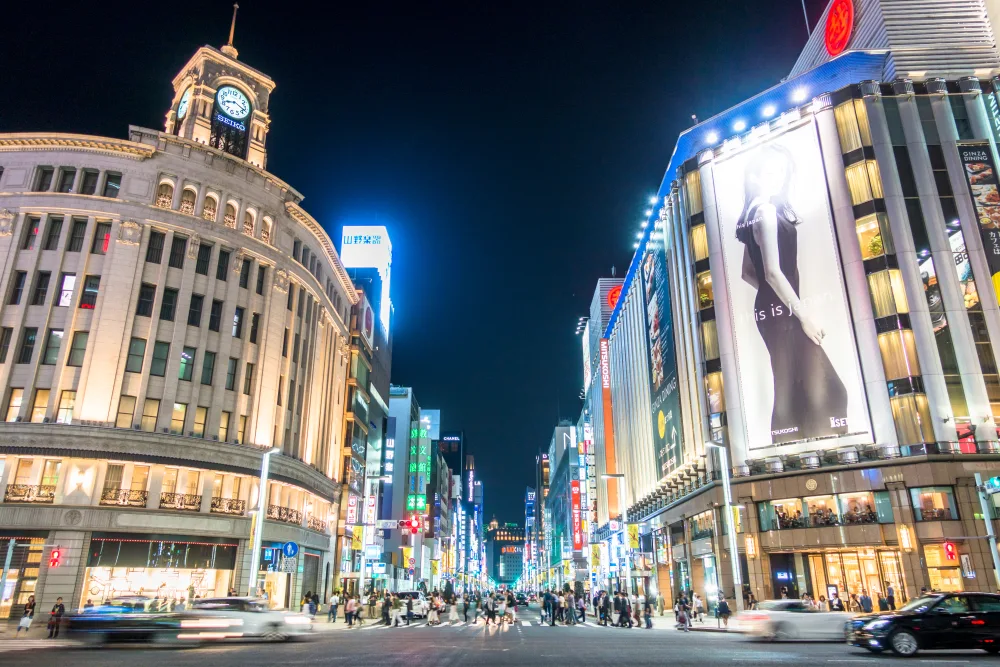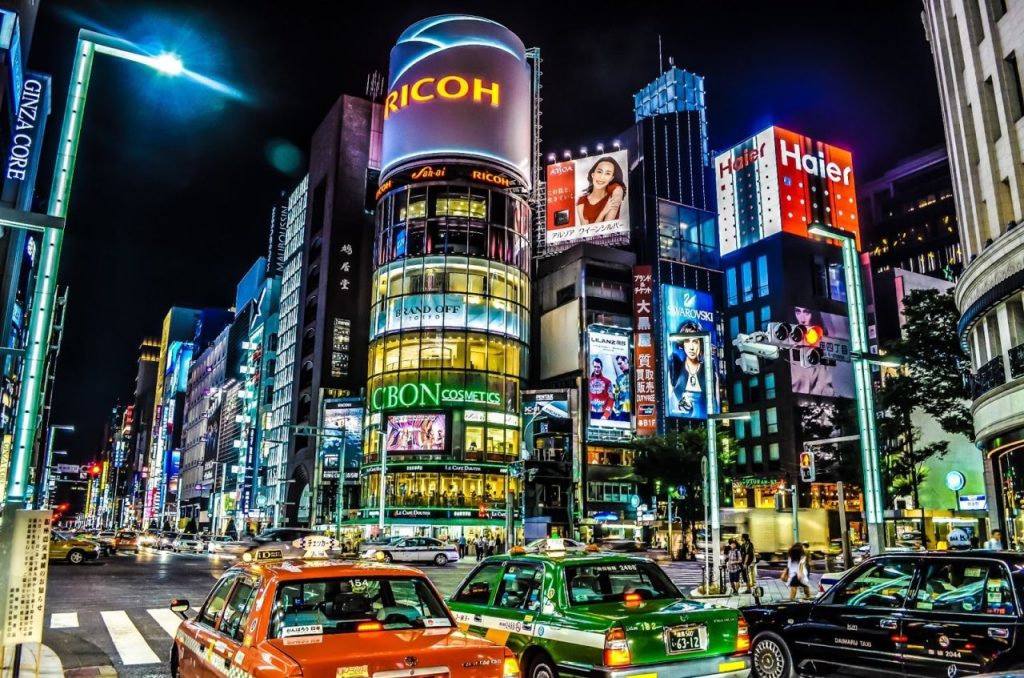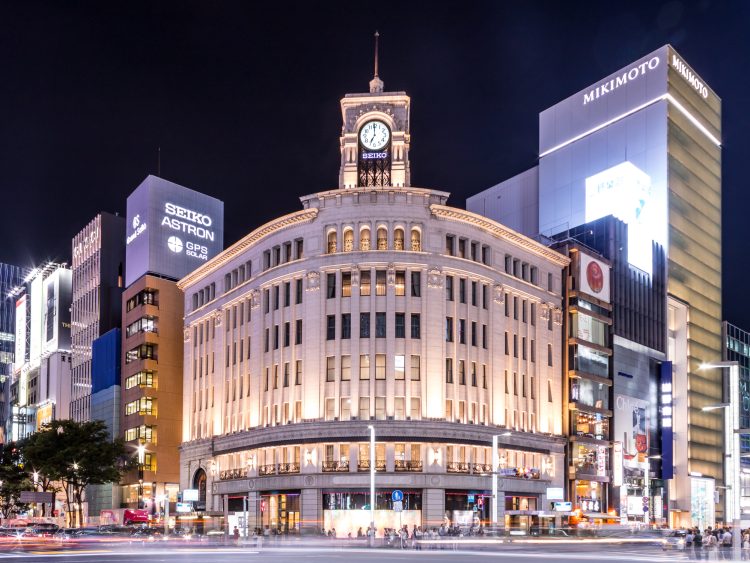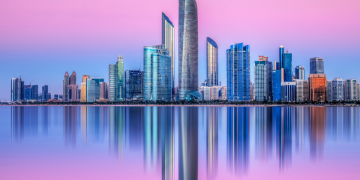In the vibrant international metropolis of Tokyo, Ginza is undoubtedly a shining pearl. It is not only a paradise for shopping and entertainment, but also carries profound historical and cultural connotations. Next, let’s explore the unique charm of Ginza and feel the historical and modern light of this land.
First, the historical origin and development of Ginza
Ginza’s history dates back to the Edo period, when the land was still a vast expanse of water. However, under Tokugawa Ieyasu’s leadership, Ginza gradually came to prominence through land reclamation. The origin of the name “Ginza” is closely related to the casting of silver coins. In 1612, the silver coin minting house was moved to this new area from Junfu, thus giving it the prestigious name “Ginza”.
Over time, Ginza has evolved from a silver minting site in the Edo era to one of Tokyo’s most prosperous business districts. During the Meiji era, Ginza ushered in an important historical turning point. As the doors opened, foreigners began pouring into Japan, choosing to settle in Ginza, bringing a whole new culture and way of life to the land. Cafes, Western-style bars, galleries and other new things have emerged, making Ginza Japan’s window to the world, and marking a new chapter in Japanese civilization.
Especially after a great fire in 1872, Ginza underwent a process of reconstruction. The design of the British architect Thomas Wolters has breathed new life into Ginza, using elements such as masonry and gas streetlights to create a new district with a modern feel. During this period, Ginza became an important symbol of Japanese civilization and attracted the attention of countless people.
In the 20th century, Ginza experienced natural disasters such as the Great Kanto Earthquake, but it was always able to recover quickly and continue to thrive. Today, Ginza has become a world-famous shopping paradise, bringing together many high-end brands and fashion boutique, attracting tourists from all over the world.

Second, Ginza’s architectural style and internal layout
Ginza’s architectural style can be described as diverse, with both traditional and stylish buildings and modern Western-style buildings. This fusion of styles makes Ginza visually present a unique charm that makes people linger.
Traditional and gentle buildings, such as Kabukiza, embody the charm of traditional Japanese culture with their exquisite wooden structures and decorations. These buildings are not only of historical value, but also an important part of Ginza culture. They bear witness to the development of Ginza and have become a popular spot for tourists to explore traditional Japanese culture.
Ginza is also full of modern Western-style buildings. These buildings are characterized by clean lines and modern design styles, showcasing the prosperity and vitality of Tokyo as an international metropolis. High-rise buildings, shopping centers, luxury hotels and other modern facilities are available, providing tourists with a convenient and comfortable shopping and leisure environment.
Walking into Ginza, you will be attracted by its clean and wide streets. The sidewalks on both sides are spacious and comfortable, and the shop Windows are chic, displaying the latest fashion items and luxury jewelry. When the night falls and the lights start to shine, Ginza is even more enchanting, as if you are in a dreamlike fairy tale world.
The interior layout of Ginza is also very distinctive, divided into multiple “Ding Mu”, each with its own unique style and atmosphere. From Ginza Yitomo to Ginza Yatomo, visitors can feel the different business atmosphere and cultural characteristics. For example, Shitomo Ginza is known for its upscale department stores and luxury stores, which bring together brand-name goods from all over the world. The Ginza Rokudinme is home to many fine restaurants and bars, providing visitors with a wealth of food and entertainment options.
Third, Ginza’s status and far-reaching influence in Tokyo
Ginza has an important place in Tokyo and throughout Japan, not only as a synonym for high-end shopping, but also as a meeting point for culture, art and fashion. It brings together brand-name goods and fashion products from all over the world, from high-end fashion to fine jewelry, satisfying consumers’ pursuit of quality and taste.
In addition to its enormous contribution to the economy, Ginza has had a profound impact on Japanese culture and art. Kabuki and other traditional art venues here provide an important stage for the inheritance and promotion of traditional Japanese culture, so that tourists can enjoy the charm of traditional Japanese culture while enjoying shopping. Modern art galleries and galleries showcase the charm and innovation of contemporary art, providing a platform for artists to showcase their talents and exchange learning.
Fourth, the historical changes and characteristics of Ginza
With the changes of The Times and the development of society, Ginza is also constantly evolving and progressing. However, in this process, it has always maintained a unique charm and style, becoming a business card of Tokyo.
During the Edo period and the early Meiji period, Ginza developed primarily as a business district, with numerous shops and trading markets, making it one of the most bustling commercial centers in Tokyo at the time. With the influx of Western culture and the advancement of civilization, Ginza began to show a combination of Chinese and Western styles. Western architecture and modern facilities gradually appeared on this land, injecting new vitality and charm into Ginza.
Since the beginning of the 20th century, Ginza has undergone several reconstruction and renovation processes. After the Great Kanto Earthquake, Ginza underwent extensive reconstruction work, and many new buildings and commercial facilities were erected, which were not only more modern and fashionable in design, but also more complete and diversified in function. Modern shopping malls, high-end restaurants, entertainment venues and so on have entered Ginza, making the business atmosphere here more intense and diversified, to meet the needs of different consumers.
With the development of globalization and digitalization in recent years, Ginza is also constantly innovating and upgrading to meet the needs of consumers in the new era. Many traditional merchants have begun to try the combination of online and offline sales model to provide consumers with a more convenient and personalized shopping experience. At the same time, Ginza is also trying to create a more comfortable and convenient shopping environment to attract more tourists and consumers to come to experience this charming land.
It is worth mentioning that Ginza has retained some representative buildings and landmarks in different historical periods, which have witnessed the development of Ginza and become a popular spot for tourists to explore the history. Buildings such as the Bank of China Capsule Tower and Shizuoka Shimbun Shizuoka Broadcasting’s Tokyo branch building attract the attention of countless tourists with their unique design and historical value.

- Modern style and future prospects of Ginza
Today, Ginza is not only a shopping district, but also a comprehensive experience area that combines history, culture and modern urban life. Here you can stroll along the spacious and clean streets and admire the exquisite window displays on both sides; You can taste the food of different countries and feel the collision and integration of different cultures. You can also visit museums and galleries to get a taste of contemporary art.
Ginza is also one of the most popular nightlife spots in Tokyo, with upscale cocktail bars, elegant jazz clubs, and traditional Japanese taverns to suit your needs, whether for a business gathering or a gathering of friends.
Looking ahead, Ginza will continue to maintain its unique charm and historical heritage, while constantly innovating and evolving to meet the needs of The Times. As technology advances and consumer needs change, Ginza will further expand its commercial and cultural functions to become a more diversified and modern business center. At the same time, Ginza will continue to inherit and promote traditional Japanese culture and provide tourists with a richer cultural experience.
Ginza is a calling card of Tokyo, showcasing the city’s historical heritage, cultural heritage and modern urban style. Whether you are a shopping freak, a foodie or a culture and art lover, you will find your own fun and surprise in Ginza. Let’s look forward to a brighter future for Ginza!





















